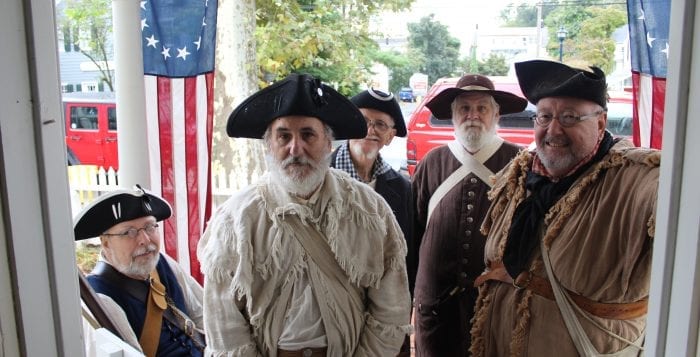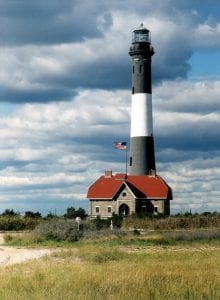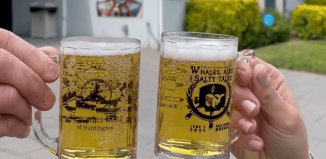How a King’s Grant is Today Preserving Long Island’s History

Since 1639, the Gardiner family and their descendants have owned a 5-square-mile island in the Atlantic Ocean nestled between Long Island’s North Fork and South Fork. The property, known as Gardiner’s Island, was obtained from King Charles I of England as part of a royal grant. Today, that legacy is benefiting all of Long Island, thanks to Robert David Lion Gardiner, the island’s 16th Lord of the Manor, who died in 2004.
In 1987, Gardiner established the Robert D.L. Gardiner Foundation to support the study of American history. Each year, the foundation awards $5 million in grants to Long Island and New York nonprofits focused on preserving history. Look around at preserved pieces of history all across Long Island and in New York City, and you will likely find the foundation often behind the scenes offering support.

The foundation helped reinvigorate the Walt Whitman Birthplace State Historic Site in West Hills, for instance, in preparation for this year’s 200th birthday year celebration.
And as the Cradle of Aviation Museum in Garden City prepared for its 50th anniversary of the Apollo mission this past July, Gardiner helped fund programs and space travel exhibits. It’s considered a substantial addition to the museum and Long Island’s contribution to the space program.
The 107-year old Huntington Lighthouse was preserved and restored with a $145,000 matching grant from the foundation. The Whaling Museum & Education Center at Cold Spring Harbor has the foundation to thank for its climate-controlled storage rooms for its collections.
Big or small, the foundation has been a wonderful resource for nonprofits. Since the foundation aims to preserve Long Island heritage and encourages collaboration, it is possible to find many success stories.
In Setauket, some may have noticed the sagging 1887 carriage shed at the Caroline Church has been replaced. The foundation over the last few years has helped fund its stabilization and replacement.
St. James is currently undergoing a revitalization, and the foundation helped fund the Celebrate St. James organization in staging a musical comedy about the entertainment history of the community.
This month, the foundation awarded its 2019 grants. Recipients include the Order of the Ancient and Honorable Huntington Militia which presented Dec. 14 a demonstration at Raynham Hall Museum in Oyster Bay of handmade colonial crafts and trades. The presentation included a free exhibition with artisans who showed how to do silver and black smithing, weaving, horn and leather work and basket weaving.
Harriet Gerard Clark, executive director of Raynham Hall Museum, is one of many people from organizations that recognize the distinct value of Gardiner.
“I would say that the Gardiner foundation is profoundly changing the way we understand history on Long Island, not only by providing very much needed brick-and-mortar funding, but also by proactively encouraging and incentivizing new ways of networking and collaborating among institutions concerned with historic scholarship, so that we Long Islanders can gain a truer understanding of our own identity,” she said.
The Ward Melville Heritage Organization, which owns historic properties in Stony Brook and Setauket, has also benefited from the Gardiner’s work. The foundation most recently sponsored a live historically-themed play entitled “Courageous Women of the Revolutionary War.” The production highlights the previously unsung female heroes of George Washington’s spy ring.
The Gardiner foundation is comprised of a five-member board, plus an executive director. Kathryn Curran bears that title and deserves special recognition.
“Kathryn is a terrific lady, she is very creative and brings people together.”
– Gloria Rocchio
WMHO president, Gloria Rocchio, is very grateful to the foundation and recognizes Curran’s unique qualities.
“Kathryn is a terrific lady,” Rocchio said. “She is very creative and brings people together.”
One of the conditions of WMHO’s grant was to talk to other historical societies.
“We are making new connections because of that effort,” Rocchio added. “That was all because of Kathy.”
The Smithtown, Northport, Port Jefferson, Miller Place-Mount Sinai and many other Long Island historical societies have grown or become better established because of the Gardiner foundation.
The organization also announced this month that it will fund a Long Island Radio & Television Historical Society documentary that will explore the development of wireless technology on Long Island, featuring the Telefunken wireless station in West Sayville and an international spy ring in the lead-up to World War I. The project also highlights the work of Nikola Tesla of Shoreham and Guglielmo Marconi of Babylon.
The foundation seeks to support 501(c)(3) organizations that demonstrate strong and organized internal capacity, effectiveness, financial and human resources as well as the intellectual capacity to successfully manage the project. Newly formed historical entities are welcomed to apply for a grant.
At a time when historical preservationists report a decline in financial resources, the foundation’s support becomes more and more noteworthy.
For high school students interested in studying history, the foundation also offers a generous undergraduate scholarship worth $40,000.
The Gardiner’s grant portfolio and scholarship information can be viewed on its website at www.rdlgfoundation.org, which gives an in-depth overview of its preservation efforts.






